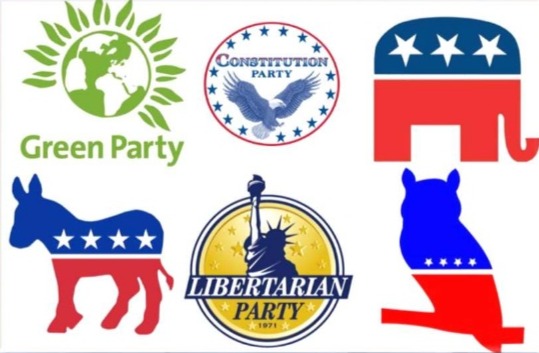How to categorize Political Parties
The Academy of Political Science
There are several ways to categorize political parties.
1. Cadre-based parties & mass parties (non Cadre)
2. Representative and integrative parties
3. Constitutional parties and revolutionary parties
4. Left wing parties & Right wing parties
1. Cadre based parties and mass parties (non Cadre)
A Cadre based party is basically a political party funded and can by upper class of the society. This includes businessmen, aristocrats and rich people in general. These Cadre based parties are only active during election seasons and their representation is mostly limited to rich politicians.
E.g.: Democratic & republican parties in the U.S.
Conservative party-U.K.
Non cadre parties are basically a political party funded and run by the middle class and lower class of the society. This includes union leaders, professional, activists, laborers, middle class and lower class in general. These non-cadre parties are active even during non-election seasons and their representation mostly consists of middle class and poor people.
E.g.: Labor party-U.K.
Libertarian party-U.S.
2. Representative and integrative parties
Representative parties represent the public opinion as it is while integrative parties shape and mobilize the public opinion. Therefore, representative parties seem to have a conservative approach while integrative parties have a liberal approach.
E.g.: The Republican Party in the U.S. sticks to the conservative public opinion and defined their stance against LGBT rights, abortion, immigration, antigun laws while democrats are trying to shape the public opinion on above matters.
3. Constitutional parties and revolutionary parties
A constitutional party is a political party that sticks to the constitutional means within the democratic format to gain political power. A revolutionary party can go beyond constitutional and democratic methods in order to achieve political power such as revolutions, coups.
E.g.: UNP & SLFP are two Sri Lankan political parties that have attempted to gain governmental power through constitutional elections.
JVP on the other hand who initiated as a revolutionary party that attempted to gain the power of Sri Lanka through two armed revolutions in 1971 and 1988/1989 before turning into a constitutional party in 1994.
4. Left- wing & Right-wing parties
This categorization is based on the economic theory the political party is associated with right wing parties are mostly capitalist while left wing parties follow a socialist approach. According to some political scientists there is a third category also as moderate parties. However, most of the political scientists categorize moderate parties either as left wing or right wing.
E.g.: In Sri Lanka UNP & SLFP are right wing capital friendly parties while JVP and old leftist parties are socialist-friendly left-wing parties.
Details
• 2 mins read
• December 22 2020
